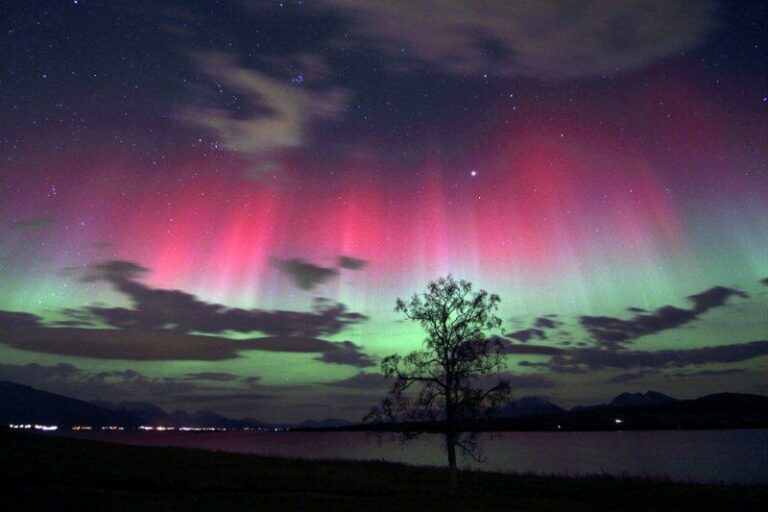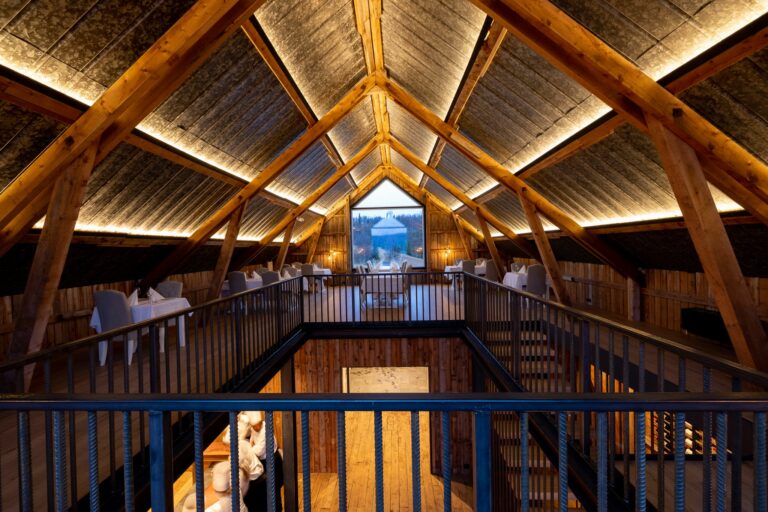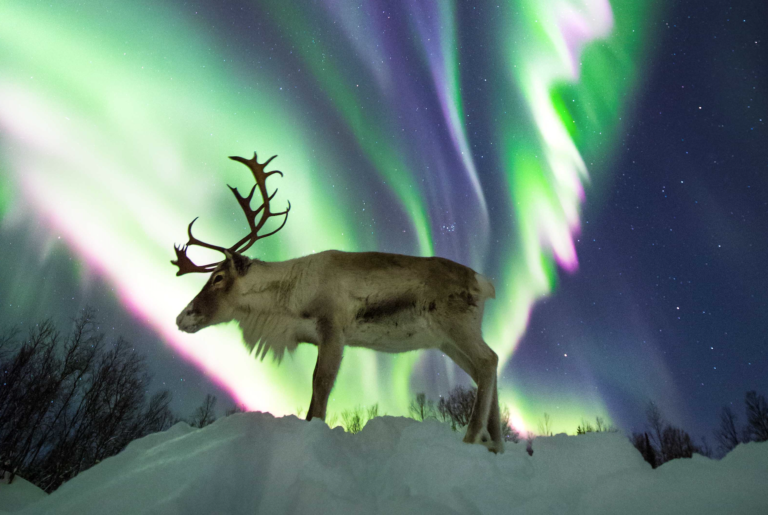Have you ever seen blue Aurora Borealis? When people think of the aurora, they generally picture green or purple. If you have never seen the aurora with your own eyes, it is hard to imagine that it can be any other colors. However under certain conditions, the aurora can also be colored a deep blue. Here’s how and when you can catch this mesmerizing color.

The main entities responsible for the aurora are monoatomic oxygen (O), diatomic nitrogen (N2) and ionized diatomic nitrogen (N2+). Oxygen emits either a red-orange or a lemon-green glow. N2 emits a deep red glow while its ionized form emits a deep blue/purple glow. As a rule the colors are set and never change but the three parameters stated above make the colors vary. Sometimes the color limits are quite defined but most of the time the entities mix with currents at different altitudes and create other colors like pink, yellow, emerald-blue, magenta and purple. During periods of intense geomagnetic storms you can potentially get a lot of different colors at once.

Blue is synonymous with high geomagnetic activity. It happens in very precise conditions. It is quite rare and happens under very specific conditions.
During intense geomagnetic storms, vertical auroral currents and winds are so strong that they mix and transport entities to high altitudes. That’s how N2+, which concentration quickly drops above 250km, can find itself lifted up several hundreds of kilometers above. Up there it still collides with solar particles but the glow is generally too faint. However in certain situations, the canopy of the aurora gets illuminated by sunlight. Sunlight transports all kinds of electro-magnetic radiations. Among them, Ultra-violets (UVs) can have a potential effect on atoms and molecules. It’s highly energetic so just like an electron collides with an entity and excites it, UV light can do the same.
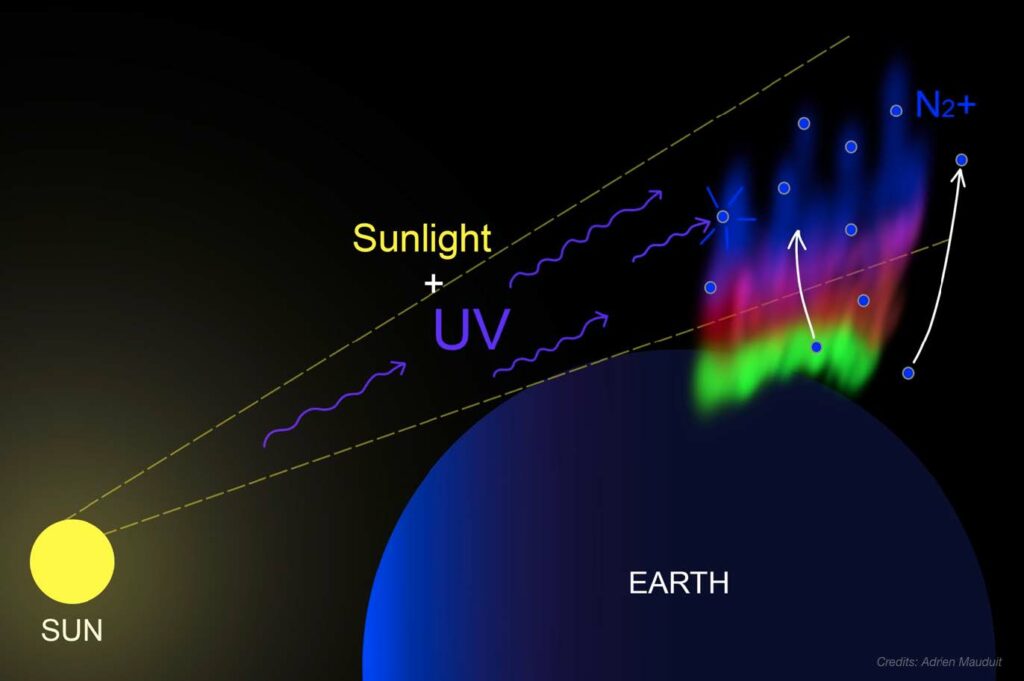
When N2+ is hit by UVs, more N2+ molecules get excited and emit a photon which wavelength is in the deep blue (400-450nm).

This blue glow can happen at altitudes above 500km! It is usually invisible with naked eyes but a camera can capture it quite well. During strong storms, the whole canopy can turn blue.

However many people mistake the blue color of the aurora with another phenomenon. When the aurora catches the moonlight, it changes its hue to the blues. The moon doesn’t even have to be above the horizon. Remember that the aurora is at the edge of space, so it might catch the moonlight even if the moon is hidden from your perspective. In this case, the green of the aurora tends to turn into turquoise or emerald. The green is not a color that is easily affected by moonlight because it is quite bright. However the red and purple of the oxygen and nitrogen respectively are fainter and thus much more affected.

The top of the aurora tends to turn magenta, purple, violet and blue as the moon gets brighter. During full moon, it is not rare to actually see a blue auroral canopy on top of the green. Remember that it is not the actual color blue that is produced but it is more as if you were putting a filter in front of the moon.
Another big factor that can influence the way you look at aurora is your camera system when you are taking pictures. A lot of people photograph the aurora with systems like Sony, Canon or Nikon. You should know that depending on the system you are using, your photos will have a color balance and a color profile that will make the final picture look more or less blue. Sony and Nikon are renowned for producing rather blue colors straight out of the camera. Canon seems to have a bit more accurate color system and balance that tend to give you more accurate colors.

Above is an example of a picture taken with the Sony system under normal moonless conditions. It depicts an aurora that is almost turquoise. In reality it is more of a lemon green color. Furthermore, notice how the canopy colors seem to have disappeared thanks to the color balance being quite off.
Here’s how you can expect to see moderately bright aurora with a camera depending on the time of night and day. As a rule you can NEVER see the aurora during the day (camera or not) because the sunlight outshines it. You can only start seeing the brightest aurora around nautical twilight when you begin to make out the brightest stars in the sky. Even then the aurora will most likely look washed out on camera. Around astronomical twilight, you can start seeing the colors of bright auroras and maybe just make out a faint aurora. However the best time to take pictures of the aurora remains night time when the sky is totally dark. Only then can you capture the colors in their full glory. Notice how the sunlight also has an influence on aurora colors. In the bright twilight, you will also tend to see the aurora in a very blue hue. Remember that this is not the real color of the aurora. The blue color is only created at very high altitude when UVs are involved!
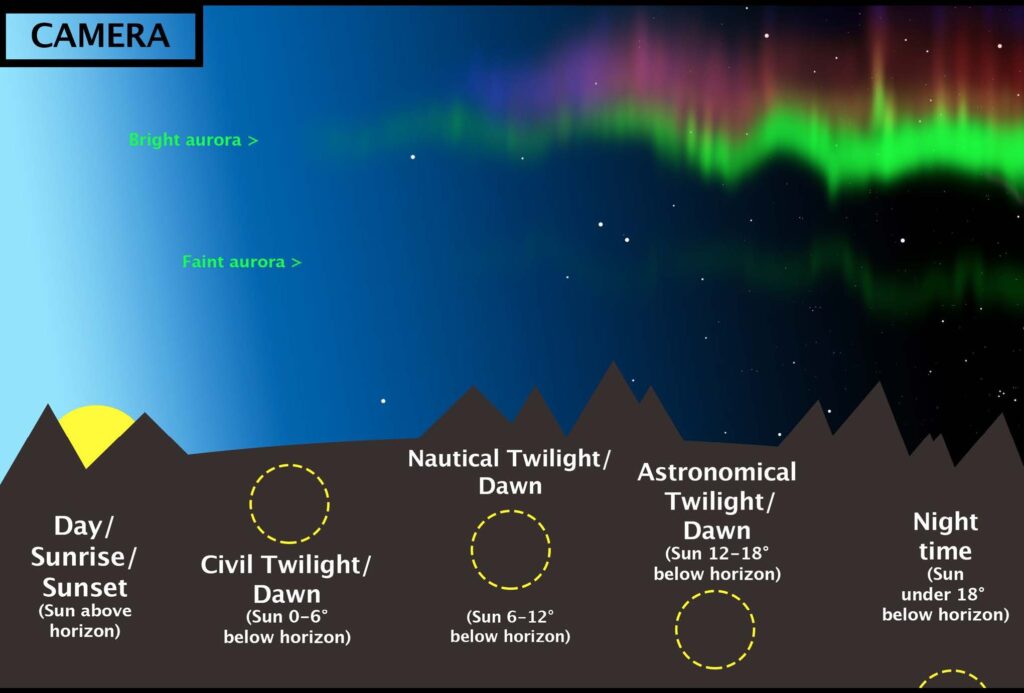
Useful links:


